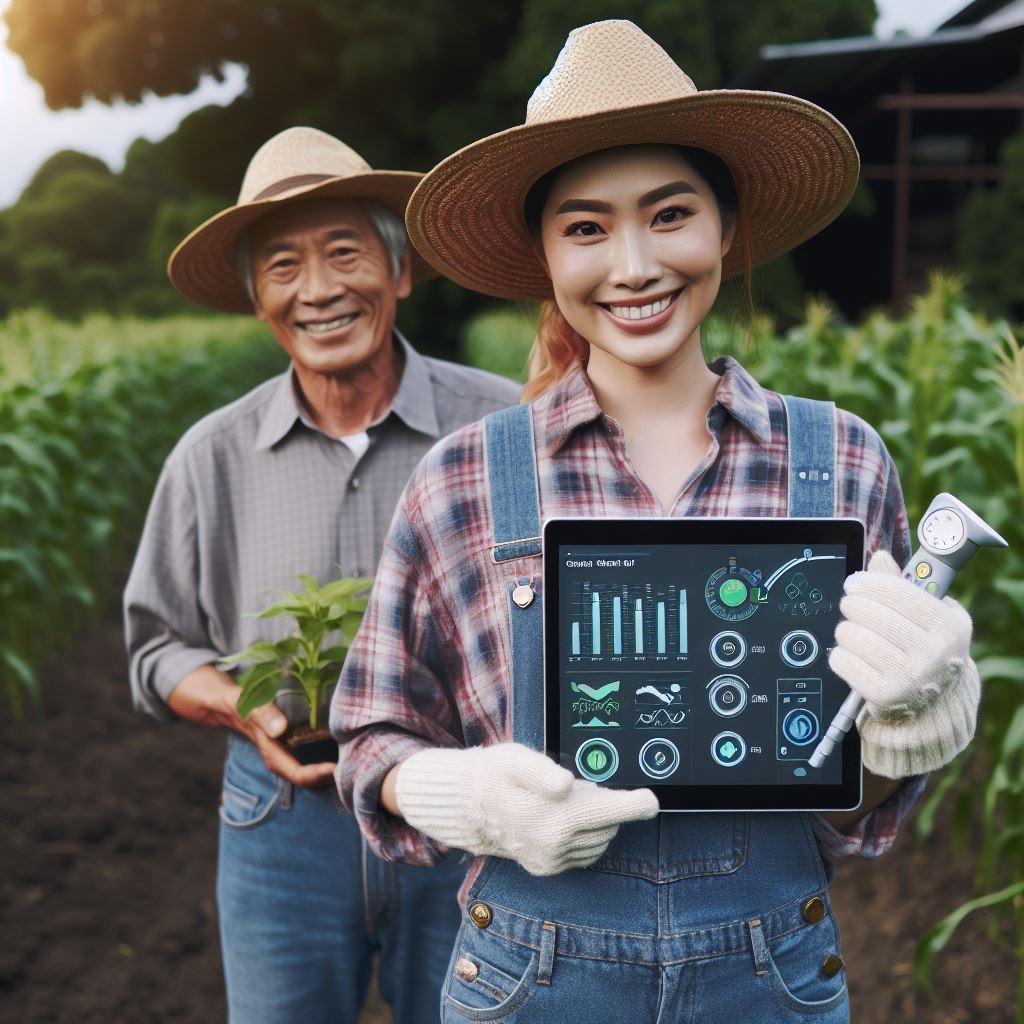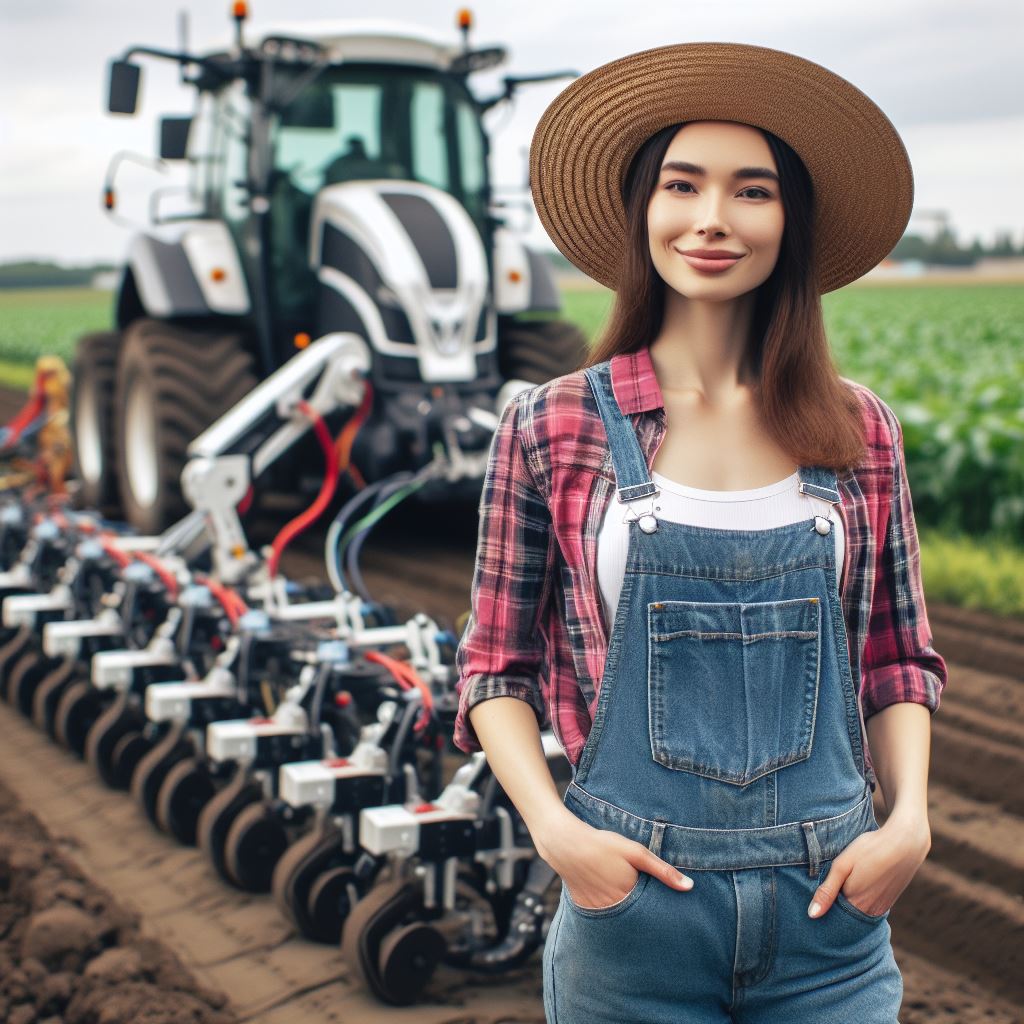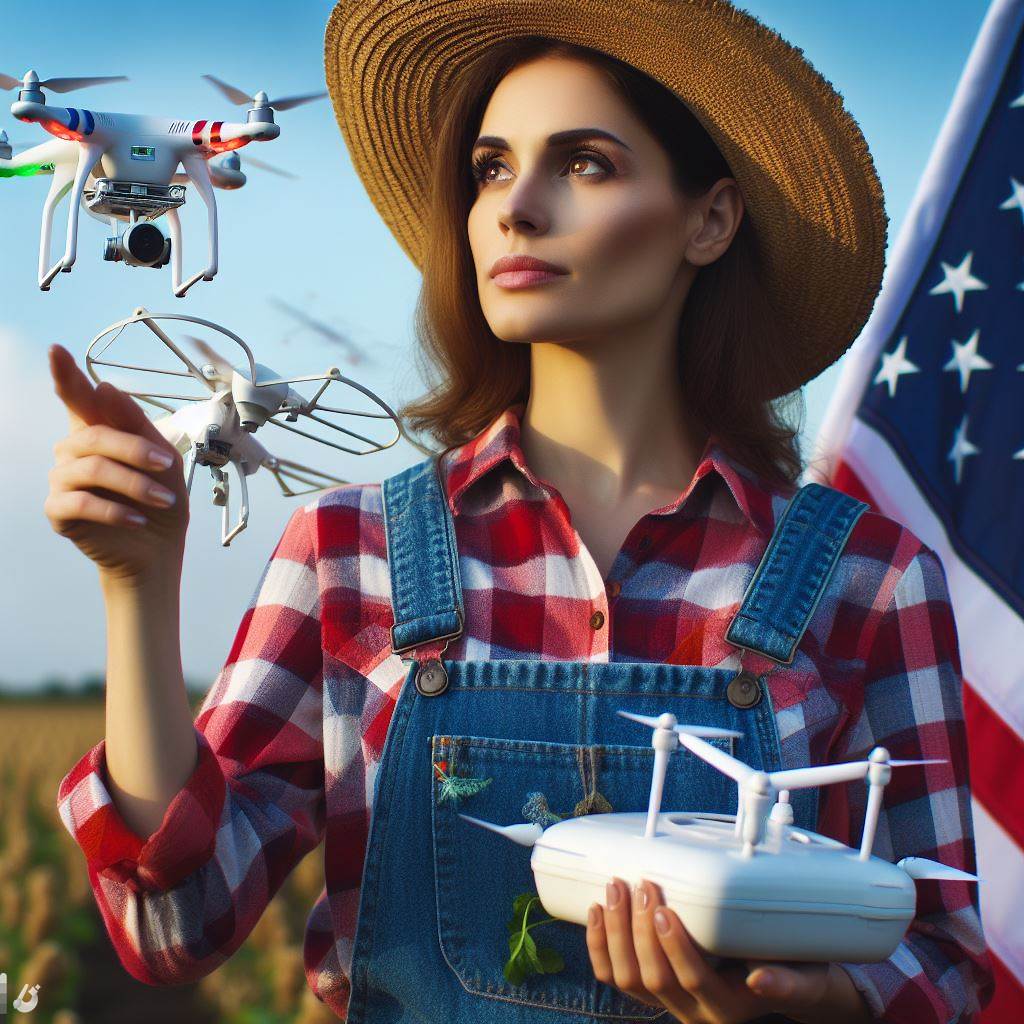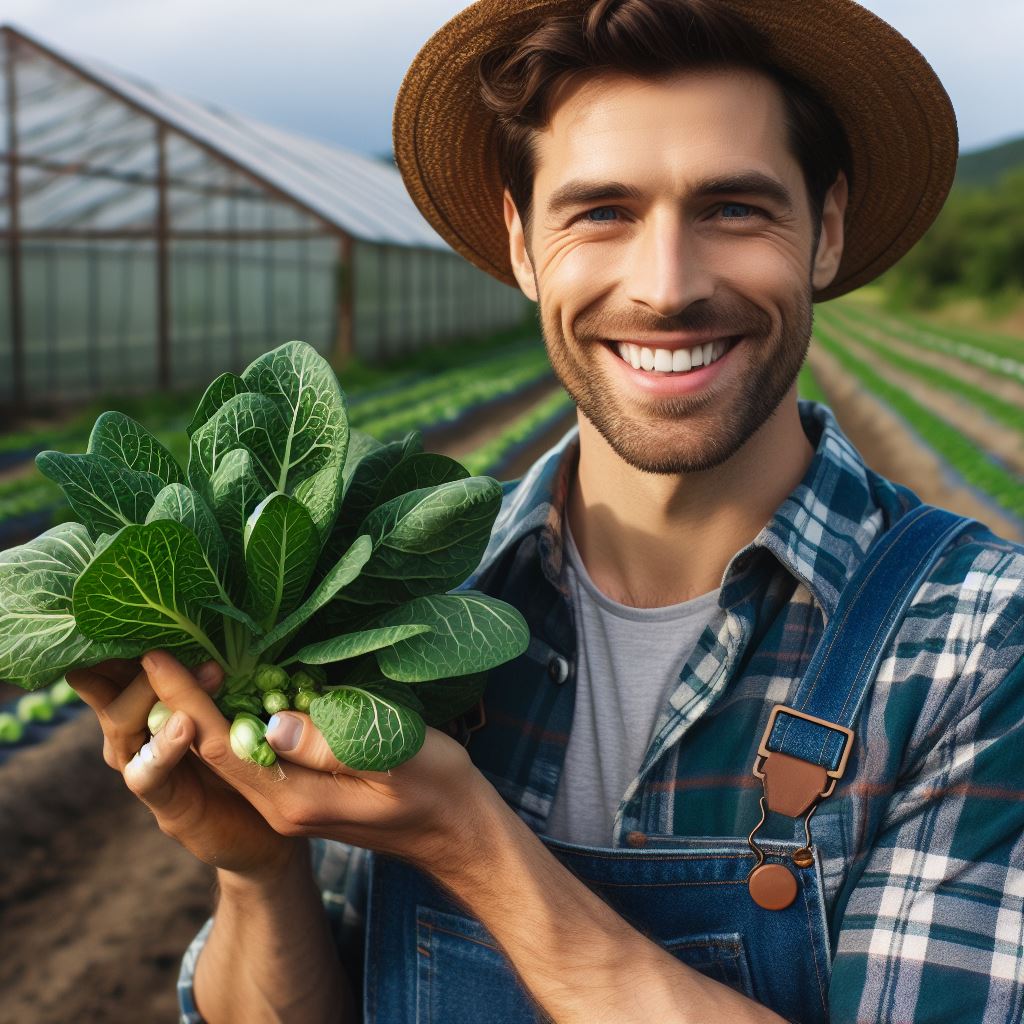Introduction
Brief explanation of IoT in agriculture
Water is a vital resource in agriculture, but its scarcity and the need to conserve it have become increasingly crucial in recent times.
One way to address this issue is by implementing IoT technology in farming practices.
IoT, or the Internet of Things, refers to the interconnection of physical devices through the internet, enabling them to collect and exchange data.
In agriculture, IoT devices such as soil moisture sensors, weather stations, and smart irrigation systems play a crucial role in improving water management.
These devices collect real-time data on soil moisture levels, weather conditions, and crop water requirements.
This information is then transmitted to a central system, which analyzes and processes it to make informed decisions about watering schedules and amounts.
Importance of efficient watering in farming
Efficient watering is of utmost importance in farming for several reasons.
Water conservation
Firstly, it helps conserve water, a scarce resource in many agricultural regions.
By precisely monitoring soil moisture levels, farmers can avoid overwatering and unnecessary water loss caused by evaporation.
This not only reduces water waste but also ensures that plants receive the right amount of moisture for optimal growth.
Cost reduction for farmers
Secondly, efficient watering practices help reduce costs for farmers.
By utilizing IoT technology to optimize irrigation, farmers can save on water usage, energy, and labor expenses.
With precise data on soil moisture levels, they can avoid waterlogging, which can lead to root rot and other plant diseases.
This mitigates the need for expensive chemical treatments or replanting.
Crop yield and quality boost
Lastly, efficient watering boosts crop yield and quality.
Transform Your Agribusiness
Unlock your farm's potential with expert advice tailored to your needs. Get actionable steps that drive real results.
Get StartedWater stress can severely impact plant growth and productivity.
By maintaining optimal soil moisture levels through smart irrigation systems, farmers can foster healthy root development, nutrient absorption, and photosynthesis.
This ultimately leads to better crop growth, higher yields, and improved overall quality.
Basically, IoT technology plays a crucial role in achieving efficient watering in agriculture.
By leveraging real-time data and smart irrigation systems, farmers can conserve water, reduce costs, and improve crop yield.
With the growing importance of sustainable farming practices, IoT in agri has the potential to revolutionize water management and contribute to a more efficient and eco-friendly future.
Benefits of Using IoT for Efficient Watering
The use of IoT technology in agriculture, specifically for efficient watering practices, offers numerous benefits.
These advantages not only help farmers increase their productivity but also contribute to sustainable farming practices and water conservation.
Precision agriculture and water management
Precision agriculture aims to optimize farming practices by using technology to enhance efficiency.
IoT plays a critical role in precision agriculture, especially in water management.
By deploying IoT devices such as soil moisture sensors and weather monitoring stations, farmers can accurately assess the water requirements of their crops.
This data helps them determine the precise amount of water needed without over-irrigating, reducing water wastage.
Real-time monitoring and data analysis
IoT enables real-time monitoring of crucial parameters like soil moisture levels, weather conditions, and crop growth.
Connected sensors continuously collect data and transmit it to a central system.
Farmers can access this data through a web or mobile application, allowing them to closely monitor their fields.
By analyzing this data, farmers gain insights into irrigation needs and can make informed decisions to prevent under/over-watering.
Automated systems for optimized irrigation
IoT-based automated irrigation systems go a step further by leveraging the collected data to automate watering processes.
These systems can be programmed to adjust water supply based on specific crop requirements, soil conditions, and weather forecasts.
As a result, irrigation becomes more accurate, reducing water usage while ensuring crops receive optimal hydration.
The automation aspect also lightens the workload on farmers, freeing up their time for other essential tasks.
Conservation of water resources
The implementation of IoT-powered efficient watering techniques contributes significantly to water conservation in agriculture.
Traditional irrigation methods often result in excessive water use, leading to wastage.
With IoT, farmers can precisely measure and control water application, minimizing waste and preserving water resources for future generations.
This not only addresses the growing concerns of water scarcity but also promotes sustainable farming practices.
Showcase Your Farming Business
Publish your professional farming services profile on our blog for a one-time fee of $200 and reach a dedicated audience of farmers and agribusiness owners.
Publish Your ProfileEnhanced crop yield and quality
Efficient watering using IoT technology directly translates to improved crop yield and quality.
By ensuring crops receive the right amount of water at the right time, farmers can optimize plant growth, leading to increased productivity.
Adequate hydration prevents water stress and enhances crop health, reducing the risk of diseases or stunted growth.
In the end, farmers can harvest higher-quality crops that meet market standards and command better prices.
Essentially, the adoption of IoT for efficient watering in agriculture brings numerous benefits.
Precision agriculture techniques, real-time monitoring, automated systems, water conservation, and improved crop yield are just a few advantages worth mentioning.
Embracing IoT technology in water management not only enhances farming practices but also contributes to sustainable and environmentally conscious agricultural production.
Read: Solar-Powered Irrigation: A Deep Dive
Components and Applications of IoT in Agri-Watering
Smart sensors for soil moisture, temperature, and humidity
Smart sensors embedded in the soil provide real-time data on moisture levels, temperature, and humidity.
These sensors enable farmers to make informed decisions regarding watering schedules and prevent over or under watering.
The sensors constantly monitor the soil conditions and send data to the control system for analysis.
Weather monitoring devices for accurate water scheduling
Weather monitoring devices gather data such as rainfall, temperature, and humidity from the surrounding environment.
This information is crucial for determining the optimal watering schedule, as it helps farmers adjust irrigation plans based on weather patterns.
The devices provide accurate data for forecasting and planning irrigation activities in the agricultural field.
Control systems for automated irrigation
Control systems receive data from smart sensors and weather monitoring devices to automate the irrigation process.
The data collected is processed using algorithms to determine the precise amount and timing of water required for crops.
These systems can automatically trigger irrigation mechanisms, such as sprinklers or drip irrigation, to efficiently deliver water to the plants.
Data analytics and visualization platforms
Data analytics platforms process the collected data and provide meaningful insights to farmers.
By visualizing the data, farmers can easily understand the current soil conditions, weather patterns, and watering requirements.
These platforms help optimize water usage, improve crop yield, and reduce water wastage by providing actionable information.
Integration with mobile applications for remote monitoring
Mobile applications allow farmers to remotely monitor and control their irrigation systems.
Through these apps, farmers can receive real-time updates on soil moisture levels, weather conditions, and irrigation activities.
They can adjust settings, remotely trigger irrigation, and access historical data from anywhere, improving efficiency and convenience.
By integrating these components, farmers can revolutionize their watering practices and achieve efficient water usage in agriculture.
IoT technology enables precise control over irrigation by providing accurate data, automation, and remote monitoring capabilities.
Efficient watering with IoT in agri not only conserves water but also maximizes crop yield and contributes to sustainable farming practices.
Read: Agri Robots: The Future of Farming Now
Case Studies
Example 1: IoT-enabled drip irrigation system in a vineyard
Description of the system’s components
One successful example of an IoT-enabled watering system is a vineyard that implemented a drip irrigation system connected to the Internet of Things (IoT).
This system consists of various components designed to automate and optimize the watering process.
The components of the system include:
- Soil sensors: These sensors are buried in the vineyard’s soil to monitor soil moisture levels in real-time.
- Control system: The control system gathers data from the soil sensors and decides when and how much water should be delivered to the vines.
- Valves and pipes: These components distribute the water from the source to the vines based on the control system’s instructions.
Benefits experienced by the vineyard owner
The vineyard owner has experienced numerous benefits since implementing this IoT-enabled drip irrigation system.
Firstly, the system ensures that the vines receive an optimal amount of water, enhancing their growth and overall health.
Additionally, the system allows the vineyard owner to remotely monitor and control the irrigation process, providing convenience and flexibility.
By receiving real-time data about soil moisture levels, the owner can adjust watering schedules and avoid overwatering or underwatering the vines.
Increase in water use efficiency and cost savings
Moreover, the vineyard has seen a significant increase in water use efficiency and cost savings.
The IoT system minimizes water wastage by precisely delivering the required amount of water to the vines, avoiding any excess runoff or evaporation.
Example 2: IoT-based smart sprinkler system in a corn farm
Overview of the system’s features
Another case study that showcases the efficiency of IoT in agriculture is a corn farm that implemented an IoT-based smart sprinkler system.
This system offers advanced features to optimize water usage and enhance crop yield.
The key features of this smart sprinkler system include:
- Weather monitoring: The system collects data from weather stations to adjust watering schedules based on rainfall forecasts and temperature.
- Intelligent sensors: These sensors measure soil moisture levels and plant needs, allowing the system to deliver water precisely where and when it’s required.
- Automated control: The system can be programmed to operate autonomously, ensuring efficient irrigation even when the farmer is away.
Improved crop yield and reduced water wastage
The implementation of the smart sprinkler system has resulted in significant improvements for the corn farm.
Showcase Your Farming Business
Publish your professional farming services profile on our blog for a one-time fee of $200 and reach a dedicated audience of farmers and agribusiness owners.
Publish Your ProfileThe precise water delivery based on real-time data from weather stations and soil sensors has resulted in better crop yield and quality.
Furthermore, the system has helped in reducing water wastage as it avoids overwatering the crops.
The intelligent sensors ensure that water is only provided when necessary, preventing excessive runoff and preserving water resources.
Farmer’s perspective on the system’s impact
From the farmer’s perspective, the IoT-based smart sprinkler system has been revolutionary.
It has simplified the irrigation process, reduced manual labor, and provided peace of mind, knowing that the crops are receiving the optimal amount of water.
In general, these case studies demonstrate how IoT technology enhances water efficiency in agriculture.
Whether through IoT-enabled drip irrigation systems or smart sprinklers, farmers can optimize water usage, increase crop yield, and achieve significant cost savings.
Read: Next-Gen Drip Irrigation: What’s New?
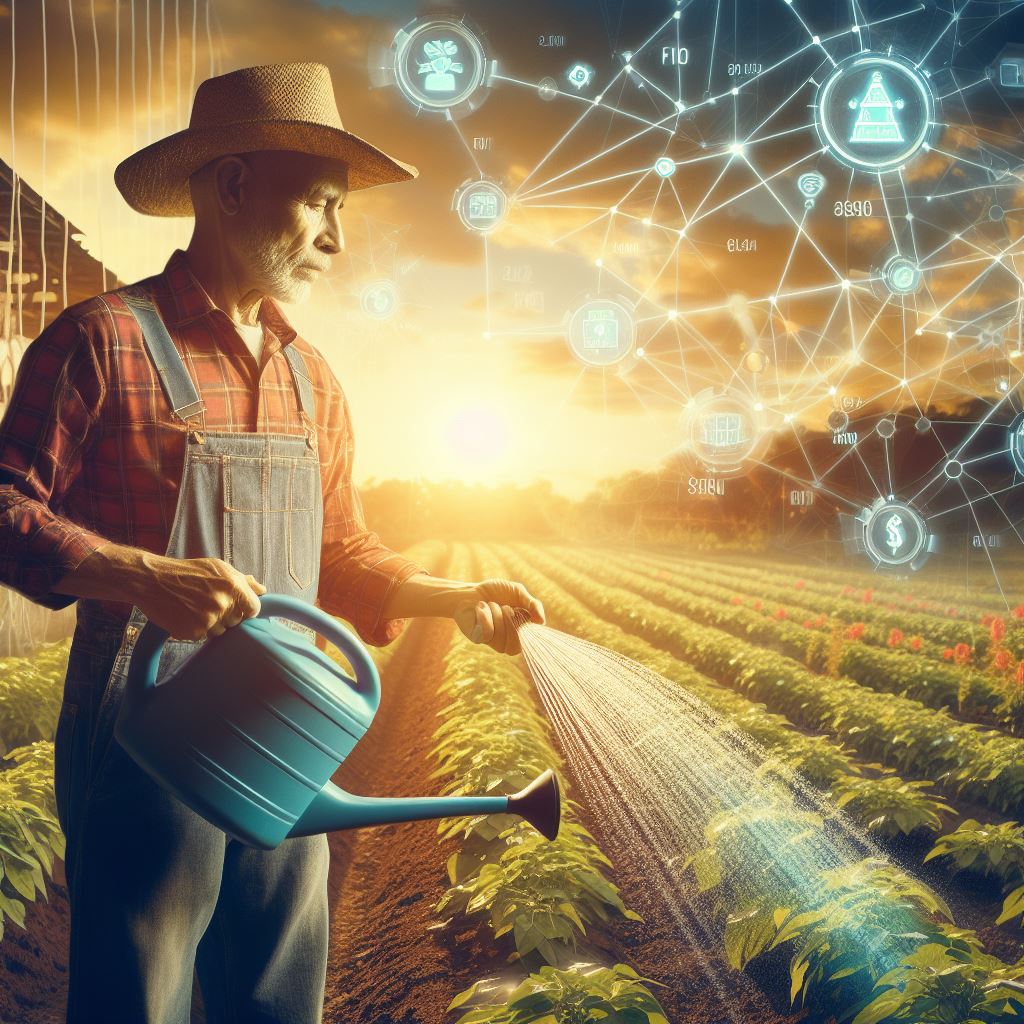
Challenges and Limitations of IoT in Agri-Watering
A successful implementation of IoT in agricultural watering systems is not without its challenges and limitations.
Here are some key areas where difficulties may arise:
Initial Setup Costs and Infrastructure Requirements
- The initial investment required for installing IoT-based watering systems can be high.
- Establishing the necessary hardware, sensors, and connectivity infrastructure adds to the overall expense.
- Small-scale farmers may face financial constraints in implementing such advanced technology.
Connectivity and Network Issues in Remote Farming Areas
- In remote rural areas, where agriculture is predominantly practiced, reliable internet connectivity might be a challenge.
- Poor network coverage can disrupt the seamless transmission of data between devices.
- Limited access to network providers hampers the connectivity required for real-time monitoring and control.
Data Security and Privacy Concerns
- IoT devices collect a large volume of sensitive data related to farming operations.
- The potential breach of this data can lead to privacy concerns, as farmers’ information might be exposed.
- Malicious attacks on the IoT infrastructure can result in disruption of farm activities and financial losses.
Potential Technical Failures and Maintenance Requirements
- As with any complex technological system, IoT-based agri-watering systems are prone to technical failures.
- Malfunctioning sensors or connectivity issues can lead to inaccurate data collection, affecting watering decisions.
- Maintenance and regular updates of the IoT infrastructure are necessary to ensure proper functionality.
Mitigation strategies
These challenges and limitations should not discourage the adoption of IoT in agricultural watering.
Rather, they call for careful consideration and mitigation strategies.
Initial Setup Costs and Infrastructure Requirements
To overcome the initial setup costs, government support programs and subsidies can be introduced to incentivize farmers.
Additionally, collaborations with technology providers to offer affordable packages can make IoT solutions more accessible to small-scale farmers.
Connectivity and Network Issues in Remote Farming Areas
In areas with poor network connectivity, alternative solutions like satellite-based communication or low-power wide-area networks (LPWAN) can be explored to ensure reliable connectivity across remote farming regions.
Data Security and Privacy Concerns
Data security and privacy concerns can be addressed by implementing robust encryption protocols and implementing regular security audits on the IoT infrastructure.
Farmers should also be educated on best practices for protecting their data.
Potential Technical Failures and Maintenance Requirements
To tackle potential technical failures, proactive maintenance plans should be put in place.
Regular sensor calibration, continuous monitoring, and timely repair or replacement of faulty hardware can enhance the reliability of IoT-based systems.
In essence, while IoT in agri-watering presents challenges and limitations, the potential benefits outweigh the obstacles.
By identifying and addressing these issues, farmers can harness the power of IoT to optimize water usage, increase crop yield, and contribute to sustainable agriculture.
Read: Smart Sensors: Changing Farm Water Use
Future Trends and Opportunities in IoT-based Watering Systems
Advancements in sensor technology for accurate soil monitoring
The future of IoT-based watering systems holds immense potential.
Advancements in sensor technology have paved the way for more accurate and precise soil monitoring.
By continuously collecting data on soil moisture levels, temperature, and nutrient content, farmers can make informed decisions about when and how much water to irrigate their crops.
Integration of IoT with AI and machine learning algorithms
Moreover, the integration of IoT with AI and machine learning algorithms adds another layer of intelligence to watering systems.
By analyzing the collected data, these algorithms can optimize irrigation schedules, ensuring that crops receive the right amount of water at the right time.
This not only conserves water but also enhances crop yield and quality.
Adoption of cloud-based platforms for data storage and analysis
Cloud-based platforms further amplify the capabilities of IoT-based watering systems.
By storing collected data in the cloud, farmers can easily access and analyze it from anywhere, using any internet-connected device.
This enables them to gain valuable insights and make data-driven decisions to improve their watering practices.
Remote control and management of irrigation systems using IoT
Remote control and management of irrigation systems are also made possible through IoT.
Farmers can now monitor and control their irrigation systems remotely, adjusting settings and schedules as needed, without physically being present at the field.
This not only saves time and effort but also ensures efficient water usage, reducing costs and environmental impact.
Potential for collaboration between farmers, researchers, and technology developers
Another significant opportunity in IoT-based watering systems is the potential for collaboration between farmers, researchers, and technology developers.
Through data sharing and joint efforts, they can collectively work towards enhancing the efficiency and effectiveness of watering systems.
This collaboration can lead to the development of innovative solutions tailored to specific agricultural needs.
In a nutshell, the future of IoT-based watering systems looks promising.
Advancements in sensor technology, the integration of AI, cloud-based platforms, and remote control capabilities, as well as the potential for collaboration, all contribute to more efficient and sustainable agriculture.
As technology continues to evolve, these trends and opportunities will further revolutionize the way water is managed in agriculture, ensuring optimal crop growth while conserving water resources.
Showcase Your Farming Business
Publish your professional farming services profile on our blog for a one-time fee of $200 and reach a dedicated audience of farmers and agribusiness owners.
Publish Your ProfileConclusion
The use of IoT in agriculture for efficient watering has many potential benefits but also poses some implementation challenges.
Overall, employing sensors, automation, and data analytics to optimize irrigation can improve crop yields, conserve water, and reduce costs.
However, farmers must carefully evaluate options to find affordable solutions tailored to their operations.
In summary, IoT-enabled precise irrigation can boost productivity through optimal moisture levels while eliminating overwatering.
Real-time data provides insights to refine watering schedules and amounts.
Automated systems reduce labor needs and ensure timely application.
Moisture sensor networks and aerial imaging enable monitoring across large areas.
While IoT systems involve upfront investment, the long-term savings from better resource utilization are significant.
Adopting new technologies has hurdles, like initially higher equipment expenses, integration with existing infrastructure, and learning curves.
There are also data security concerns.
However, the capabilities enabled by IoT make overcoming these difficulties worthwhile, especially as technology improves and becomes more accessible.
With proper planning and research, farmers can find the right solutions for their needs.
Efficient automated watering through IoT has too many benefits to ignore.
Smarter irrigation optimizes yields, saves water and costs, and reduces burdens.
While implementing IoT for agriculture involves challenges, the possibilities it unlocks make it a worthwhile endeavor.
Farmers owe it to themselves and their land to explore these emerging tools to sustainably maximize production.

